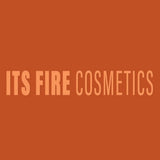The beauty industry has been the subject of animal abuse due to the use of both rabbits, mice, and monkeys to test cosmetic products and know their possible results. Luckily, there are more and more firms that demarcate from these traditional procedures and are committed to a production free of animal suffering.
That is why labels like 'organic', 'vegan', 'organic' or 'cruelty free' frequently appear on makeup containers and facial care products. But which of these characteristics is truly respectful of animals?
In order for any cosmetic product to be considered as 'vegan', it must not contain any ingredients of animal origin, nor derived from them, such as lactic acids or honey. A slightly less demanding category is that of 'vegetarian', which assumes that the product may not contain any part of the animal, but ingredients produced by them.
On the other hand, a cosmetic classified as 'cruelty free' , that is, free from animal abuse, depends on other factors. For this, both the final product and all the ingredients it contains cannot have been tested on animals. But the responsibility not only lies with the brand that sells the cosmetic, but it is up to third companies contracted only to carry out a part of the production. If any of these uses animals to test their ingredients, then they cannot receive the 'cruelty free makeup' label.
It is also possible that the firm that markets the product does not test on animals, but is part of a larger company with other brands that do. And, if we go even further, it would be convenient to pay attention to the market for selling their products. For example, cosmetics sold in China are required by law to be tested on animals. Thus, any brand that in Europe claims to be 'cruelty free' loses that category when it goes on sale in the Chinese market.
It is also possible that the firm that markets the product does not test on animals, but is part of a larger company with other brands that do. And, if we go even further, it would be convenient to pay attention to the market for selling their products. For example, cosmetics sold in China are required by law to be tested on animals. Thus, any brand that in Europe claims to be 'cruelty free' loses that category when it goes on sale in the Chinese market.
While obtaining ingredients from animals does not have to cause suffering for them, the fact of testing them is considered an act of cruelty according to organizations such as PETA (People for the Ethical Treatment of Animals). The truth is that this procedure has become totally unnecessary. Currently, it is not only possible to have new mechanisms that allow us to know the effects of an ingredient - such as animal tissue replicas - but there is also a large list of ingredients classified as “safe” that have been previously tested. Even so, many firms tend to retest these ingredients, either because of ignorance or because they test the final product.
Animal-friendly cosmetic brands
At first glance, it may seem complicated to find out if a brand is free from animal cruelty and what ingredients it uses to make its products. But thanks to initiatives such as It's Fire Cosmetics, it is already possible to have lists of both brands that test on animals and those that are 'cruelty free' or 'vegan'.
